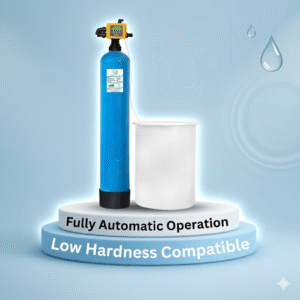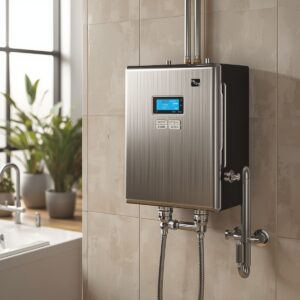Sediment Filter – Complete Guide for Clean and Safe Water
Introduction to Sediment Filter
A sediment filter is the first and most important stage of any water filtration system. It works by removing physical particles like sand, dust, silt, rust, and other debris from water. Whether you use an RO water purifier at home or an industrial filtration unit, a sediment filter ensures cleaner water and protects other filters from clogging.
If you have noticed cloudy water, rust particles, or slow RO water flow, it’s a sign your RO sediment filter may need cleaning or replacement.
What is a Sediment Filter?
A sediment filter is a physical barrier filter designed to trap suspended particles in water. It usually comes in the form of a cartridge filter or spun filter made from polypropylene or pleated polyester.
Key Points:
Removes visible particles like sand, mud, and dust
First stage in RO and UV water purifiers
Increases the lifespan of carbon filters and RO membranes
Types of Sediment Filters
1. Spun Sediment Filter
Made from polypropylene fiber
Removes fine particles up to 5 microns
Affordable and used in most domestic RO systems
2. Pleated Sediment Filter
Washable and reusable design
Suitable for high-flow applications
Captures larger particles (10–50 microns)
3. String Wound Sediment Filter
Made from tightly wound cotton or synthetic yarn
Ideal for well water and industrial use
4. Bag Sediment Filter
High-capacity filtration
Commonly used in commercial plants
Benefits of Using a Sediment Filter
Improves Water Clarity: Removes dirt and makes water look clean
Protects RO Membrane: Prevents clogging and costly replacements
Better Taste & Smell: Eliminates particles that cause unpleasant taste
Cost-Effective: Extends the life of other filters, saving money
Easy Maintenance: Simple replacement process
Sediment Filter Price in India (2025)
Type
Micron Rating
Average Price (₹)
Usage
Spun PP Sediment Filter
5 micron
₹80 – ₹200
Domestic RO
Pleated Filter Cartridge
10 micron
₹250 – ₹600
High flow
String Wound Filter
5–50 micron
₹200 – ₹500
Industrial
Bag Sediment Filter
50 micron
₹500 – ₹1500
Commercial
Note: Prices vary based on brand, size, and material quality.
How Often Should You Replace a Sediment Filter?
On average, a sediment filter should be replaced every 6–12 months, depending on water quality. For areas with high turbidity, you might need to replace it every 3–4 months.
Maintenance Tips for Sediment Filter
Monitor water flow – reduced flow means clogging
Use pre-washable filters for longer life
Replace cartridges on time to avoid bacterial growth
Always buy the correct size for your RO model
Where to Buy Sediment Filters
You can purchase sediment filters from:
RO water purifier service centers
Online marketplaces like Amazon, Flipkart
Industrial suppliers like Pearl Water Technologies for bulk orders
FAQs on Sediment Filters
Q1. What is the main function of a sediment filter?
A sediment filter removes physical particles like sand, dust, rust, and silt from water, improving clarity and protecting other filtration stages.
Q2. Can I wash and reuse a sediment filter?
Pleated and some polyester filters can be washed and reused, but spun polypropylene filters should be replaced.
Q3. Does a sediment filter remove bacteria?
No, sediment filters only remove physical particles. For bacteria, you need UV or RO filtration.
Q4. How much does a sediment filter cost?
Prices range from ₹80 for basic models to ₹1500 for heavy-duty industrial filters.
Conclusion
A sediment filter is the unsung hero of any water purification system. By removing suspended solids, it keeps your drinking water clear and extends the life of your RO membrane and carbon filters. Investing in the right sediment filter not only improves water quality but also saves you from frequent maintenance costs.


